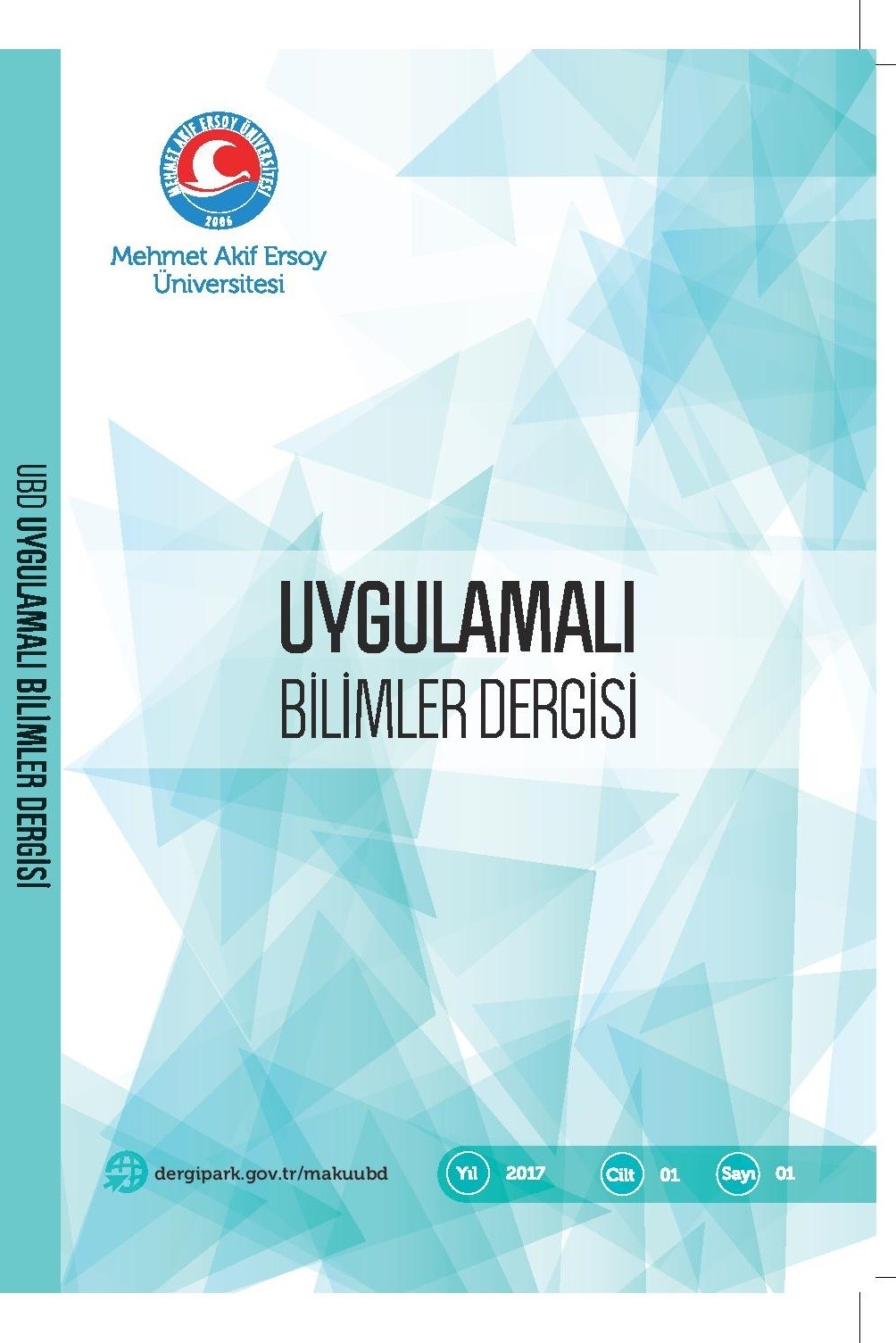Sinyalize Kavşaklarda Bekleyen Taşıtların Çevresel Etkileri: Dört Fazlı Bir Kavşak Üzerinden Durum Değerlendirmesi
kavşak, karbon ayak izi, emisyon, rölanti stop-start
Environmental Impact of Vehicles Waiting at the Signalized Intersections: A Case Study of a Four-Phase Intersection
intersection, carbon footprint, emission, idle stop-start,
___
- Cao, Z., Jiang, S., Zhang, J., & Guo, H. (2016). A unified framework for vehicle rerouting and traffic light control to reduce traffic congestion. IEEE transactions on intelligent transportation systems, 18(7), 1958-1973. https://doi.org/10.1109/TITS.2016.2613997
- Choy, M. C., Srinivasan, D., & Cheu, R. L. (2003). Cooperative, hybrid agent architecture for real-time traffic signal control. IEEE Transactions on Systems, Man, and Cybernetics-Part A: systems and humans, 33(5), 597-607. https://doi.org/10.1109/TSMCA.2003.817394
- Daganzo, C., & Daganzo, C. F. (1997). Fundamentals of transportation and traffic operations (Vol. 30). Oxford: Pergamon.
- D'Andrea, E., & Marcelloni, F. (2017). Detection of traffic congestion and incidents from GPS trace analysis. Expert Systems with Applications, 73, 43-56. https://doi.org/10.1016/j.eswa.2016.12.018
- EPA. Greenhouse Gas Equivalencies Calculator. Accessed: 24.05.2019, https://www.epa.gov/energy/greenhouse-gas-equivalencies-calculator
- Ewing, R., & Dumbaugh, E. (2009). The built environment and traffic safety: a review of empirical evidence. Journal of Planning Literature, 23(4), 347-367. https://doi.org/10.1177%2F0885412209335553
- Fouladgar, M., Parchami, M., Elmasri, R., & Ghaderi, A. (2017). Scalable deep traffic flow neural networks for urban traffic congestion prediction. In 2017 International Joint Conference on Neural Networks (IJCNN) (pp. 2251-2258). IEEE. https://doi.org/10.1109/IJCNN.2017.7966128
- Kumar, P., Ketzel, M., Vardoulakis, S., Pirjola, L., & Britter, R. (2011). Dynamics and dispersion modelling of nanoparticles from road traffic in the urban atmospheric environment—a review. Journal of Aerosol Science, 42(9), 580-603. https://doi.org/10.1016/j.jaerosci.2011.06.001
- Li, Z., Shahidehpour, M., Bahramirad, S., & Khodaei, A. (2016). Optimizing traffic signal settings in smart cities. IEEE Transactions on Smart Grid, 8(5), 2382-2393. https://doi.org/10.1109/TSG.2016.2526032
- Malakorn, K. J., & Park, B. (2010). Assessment of mobility, energy, and environment impacts of IntelliDrive-based Cooperative Adaptive Cruise Control and Intelligent Traffic Signal control. In Proceedings of the 2010 IEEE International Symposium on Sustainable Systems and Technology (pp. 1-6). IEEE. https://doi.org/10.1109/ISSST.2010.5507709
- Mannion, P., Duggan, J., & Howley, E. (2016). An experimental review of reinforcement learning algorithms for adaptive traffic signal control. In Autonomic Road Transport Support Systems(pp. 47-66). Birkhäuser, Cham. https://doi.org/10.1007/978-3-319-25808-9_4
- Nigarnjanagool, S., & Hussein, D. I. A. (2005). Evaluation of a dynamic signal optimisation control model using traffic simulation. IATSS research, 29(1), 22-30. https://doi.org/10.1016/S0386-1112(14)60115-1
- Piecyk, M. I., & McKinnon, A. C. (2010). Forecasting the carbon footprint of road freight transport in 2020. International Journal of Production Economics, 128(1), 31-42. https://doi.org/10.1016/j.ijpe.2009.08.027
- Pignataro, L. J., Cantilli, E. J., Falcocchio, J. C., Crowley, K. W., McShane, W. R., Roess, R. P., & Lee, B. (1973). Traffic engineering: theory and practice.
- Polson, N. G., & Sokolov, V. O. (2017). Deep learning for short-term traffic flow prediction. Transportation Research Part C: Emerging Technologies, 79, 1-17. https://doi.org/10.1016/j.trc.2017.02.024
- Pursula, M. (1999). Simulation of traffic systems-an overview. Journal of geographic information and decision analysis, 3(1), 1-8.
- Qi, L., Zhou, M., & Luan, W. (2016). A two-level traffic light control strategy for preventing incident-based urban traffic congestion. IEEE transactions on intelligent transportation systems, 19(1), 13-24. https://doi.org/10.1109/TITS.2016.2625324
- Sharma, S., & Mishra, S. (2013). Intelligent transportation systems-enabled optimal emission pricing models for reducing carbon footprints in a bimodal network. Journal of Intelligent Transportation Systems, 17(1), 54-64. https://doi.org/10.1080/15472450.2012.708618
- Sovacool, B. K., & Brown, M. A. (2010). Twelve metropolitan carbon footprints: A preliminary comparative global assessment. Energy policy, 38(9), 4856-4869. https://doi.org/10.1016/j.enpol.2009.10.001
- Sundar, R., Hebbar, S., & Golla, V. (2014). Implementing intelligent traffic control system for congestion control, ambulance clearance, and stolen vehicle detection. IEEE Sensors Journal, 15(2), 1109-1113. https://doi.org/10.1109/JSEN.2014.2360288
- Vallati, M., Magazzeni, D., De Schutter, B., Chrpa, L., & McCluskey, T. L. (2016). Efficient macroscopic urban traffic models for reducing congestion: a PDDL+ planning approach. In Thirtieth AAAI Conference on Artificial Intelligence.
- Zhao, D., Dai, Y., & Zhang, Z. (2011). Computational intelligence in urban traffic signal control: A survey. IEEE Transactions on Systems, Man, and Cybernetics, Part C (Applications and Reviews), 42(4), 485-494. https://doi.org/10.1109/TSMCC.2011.2161577
- Yayın Aralığı: Yılda 2 Sayı
- Başlangıç: 2017
- Yayıncı: Burdur Mehmet Akif Ersoy Üniversitesi
Bir Tuğla Üretim İşletmesi ve İlişkili Sektörlerin Karşılaştırmalı Finansal Analizi
Sosyal Sermaye: Türkiye Açısından Bir Değerlendirme
Türkiye Sanayi Elektrik Enerjisi Tüketiminin 2017-2023 dönemi için Yapay Sinir Ağları ile Tahmini
İhsan PENÇE, Adnan KALKAN, Melike ŞİŞECİ ÇEŞMELİ
Nakit Dönüşüm Süresinin Firma Karlılığına Etkisi: Küresel Lojistik Firmaları Üzerine Bir Uygulama
Eyyüp Ensari ŞAHİN, Gizem VERGİLİ
Arpalık Tepe’de Bulunan Adorant Heykelcikler
Emre ARABACI, Recep Çağrı ORMAN, Bayram KILIÇ, Kerem HEPDENİZ, Bekir YİTİK
